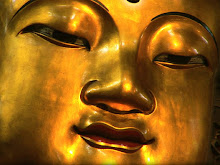If you scroll back into our older posts, you can find that we have already posted about dream yoga and lucid dreaming. After a day of tweeting about lucid dreaming, I thought we could add another post related to lucid dreaming. You may or may have not seen Inception with Leonardo DiCaprio, but in the movie they explain the dynamics of lucid dreaming. The multiple levels of a lucid dream, how to create them and how to find out if you're in a dream or in reality. Through the hours of research I have done, I have found that lucid dreaming can actually help you.
"The overwhelming majority of lucid dreams are positive, rewarding experiences. Moreover, lucidity in unpleasant dreams or nightmares can transform habitual fear into conscious courage. The simple state of lucidity is frequently enough to elevate the mood of a dreamer in a nightmare. In a study of the effect of lucid dreams on mood, college students reported that realizing they were dreaming in a nightmare helped them feel better about 60 percent of the time. Lucidity was seven times more likely to make nightmares better than worse." - lucidity.com

I have had a few of my own lucid dreams; they were the most amazing and intriguing dreams I've ever had. If you could create your own lucid dream, what would you do in it? Would you fly around the world, dive deep into the ocean, or create your own world?
